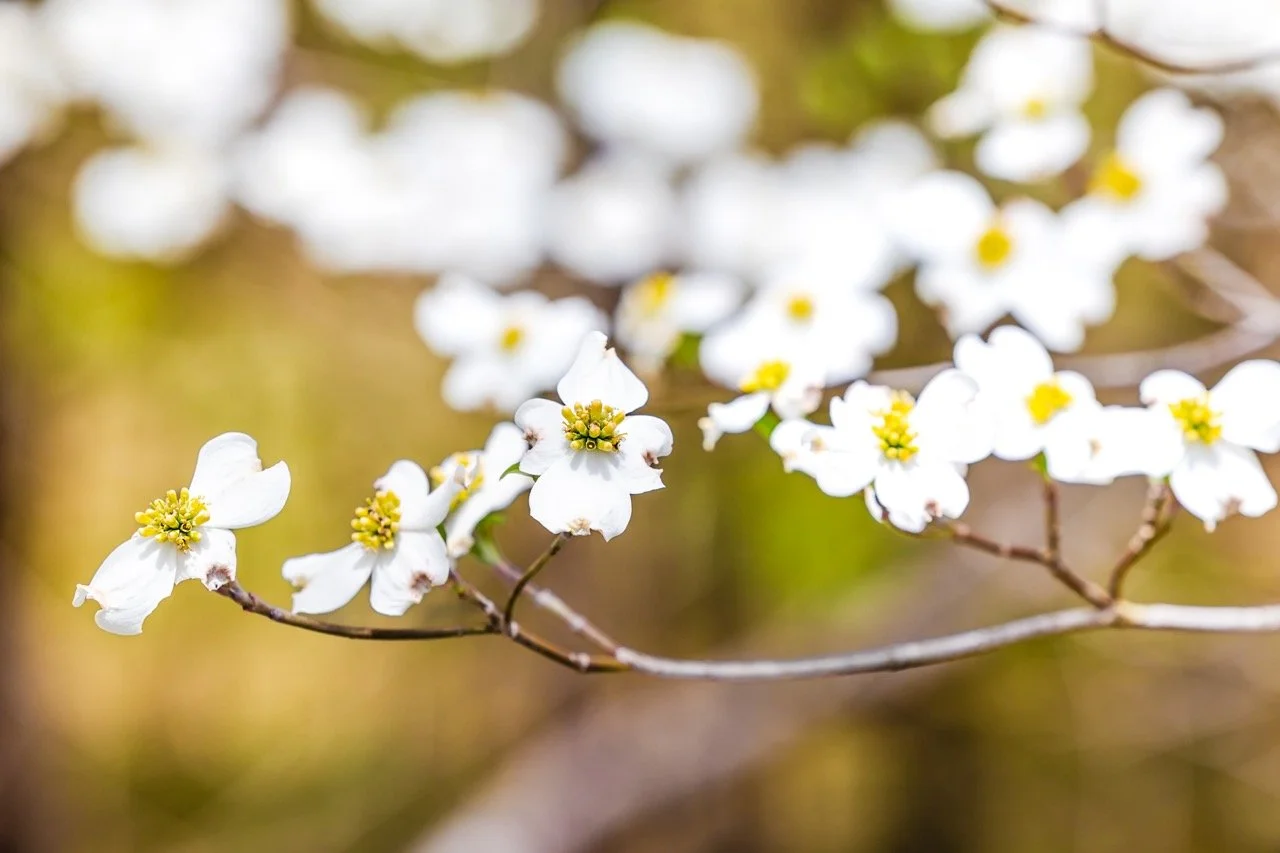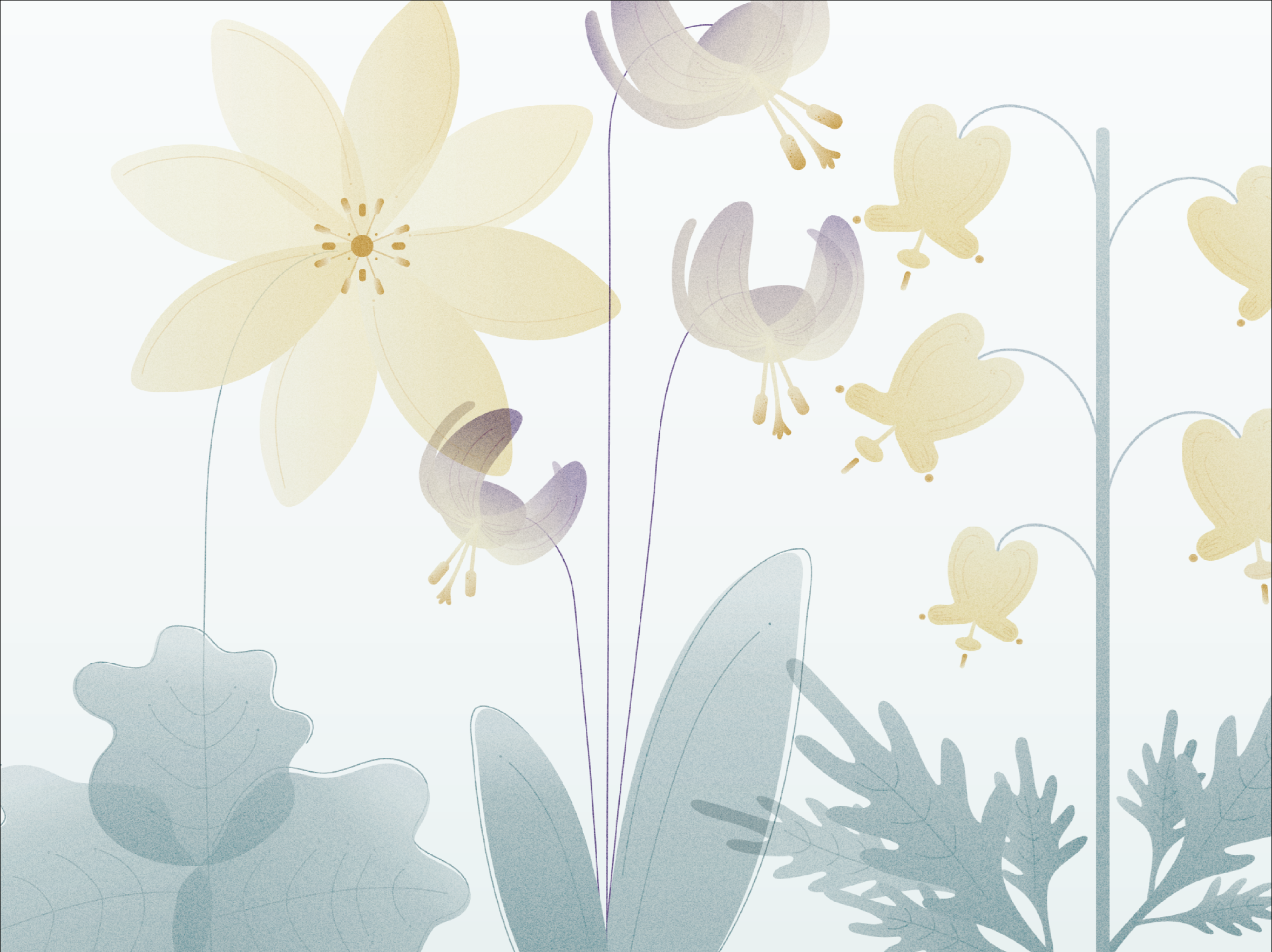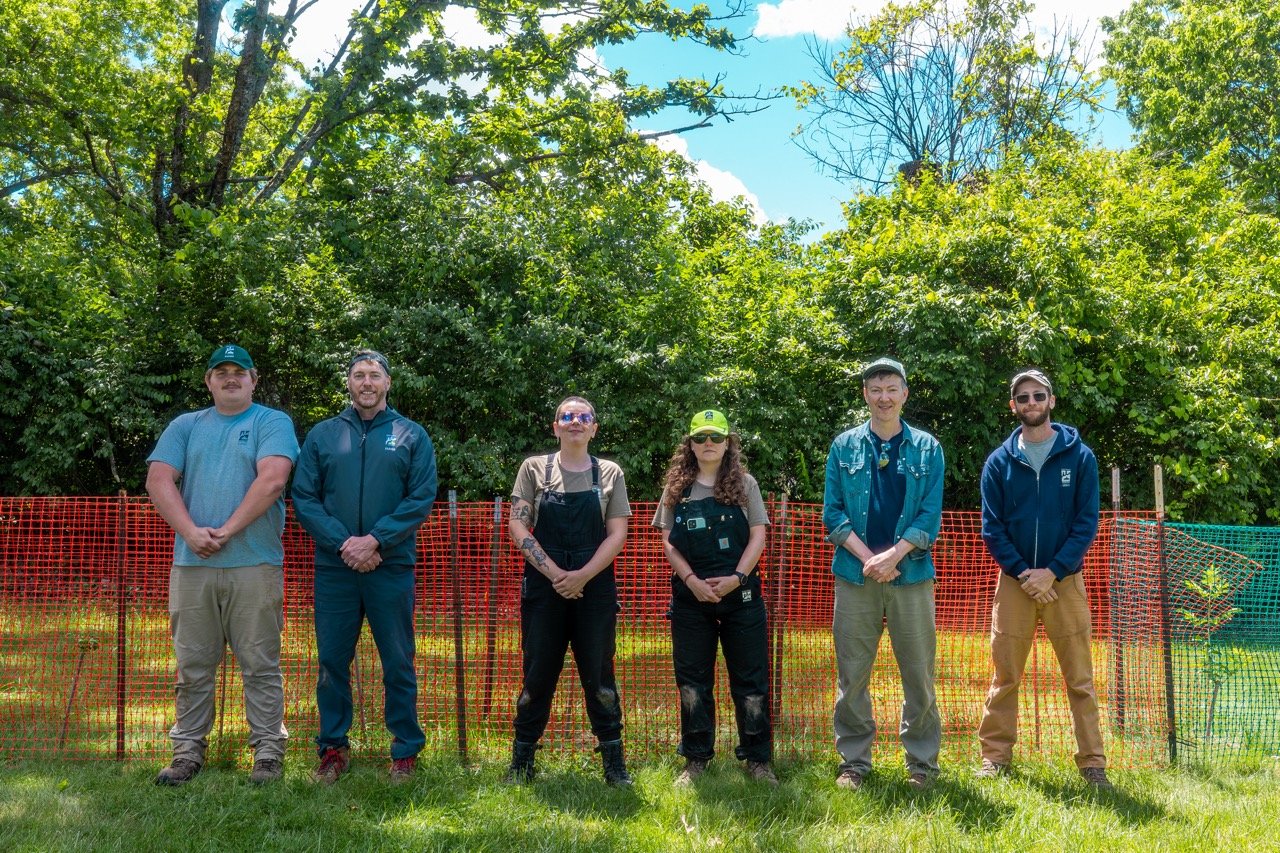To the Edge and Back

Photography by Sybilka Storie
In Ohio, 99% of indigenous prairies have been lost. In Adams County, the little-known Edge of Appalachia Preserve System aims to maintain balance among forest, prairie, and people.
I went to Lynx Prairie Preserve, in Adams County, OH, to see the beginning of the Edge.
As in, The Richard and Lucile Durrell Edge of Appalachia Preserve System, which began with the purchase of 42 acres at Lynx. Funded in part by Cincinnati garden clubs, its creation set in motion the protection of more than 20,000 acres, and helped launch what is today the world’s biggest conservation organization, The Nature Conservancy.
And it all began with the work of an extraordinary woman, Dr. E. Lucy Braun: botanist, ecologist, and conservationist.
A Legacy of Two Sisters
As you drive east from Cincinnati on the Appalachian Highway (OH 32) into Adams County, the landscape begins to undulate, wrinkle into sheer valleys and sudden bluffs. This is where Ice Age glaciers ceased their southward creep and dammed the ancient Teays River into a massive lake. Water spilled along the edge of the ice mass to form the modern day Ohio River.
Beginning in the 1910s, this beautiful landscape attracted the interest of sister scientists Annette and E. Lucy Braun. The pair had grown up in Cincinnati’s Walnut Hills, encouraged in studies of the nature world. Annette became a microlepidopterist—a specialist on tiny moths—and was the first woman to obtain a Ph.D. from the University of Cincinnati. Her younger sister, Lucy, earned a Master’s in geology and a Ph.D. in botany from UC, and during a long career teaching at the school became a giant in the fields of botany and ecology. From their Mt. Washington home, where they kept an experimental garden, the sisters explored the natural areas of our region, sometimes dodging Prohibition-era bootleggers on long field trips. Lucy collected plants for an herbarium that eventually grew to almost 12,000 specimens. She took photographs to create slides, and spent days laying transects to enumerate and botanize whole communities of flora.
“A great step in the land runs north-south through Adams County, Ohio. This escarpment marks the western front of the Appalachian Plateau, and at its foot, Ohio Brush Creek flows south to the Ohio River. The plateau to the east is dissected into steep hills and valleys. This rough country is largely wooded except for tongues of cultivated land along the major east flowing streams.”
An Adams County mineral spring spa served as one popular base from which to explore. The excellent recent documentary, Lucy Braun—Force for Nature, delves into Lucy Braun’s immense legacy. At Lynx Prairie Preserve, and in other parts of our region, Dr. Braun found what she called “relic” plant communities: pockets of grassland and forest that dated back to pre-glacial times. The prairies in Adams County harked back, she believed, to once vast grasslands.
Modern Preservation Efforts
Waiting off a bumpy gravel road in his Stihl ball cap, heavy boots, and amiable mustache, Nature Conservancy naturalist Richard McCarty looks like a local hunter—which he also is. As we set off on the Lynx Trail during my visit this spring, the lifelong Adams County resident quickly reveals himself to be a walking, talking encyclopedia of botanical and historical knowledge. He grew up roaming the area’s woods and remembers when the surrounding land was mostly pasture. The path that led him to working at the Edge began in high school, with Mr. Rick Pott’s botany class. Mr. Pott’s enthusiasm, and some shared acquaintances at Ohio University, led McCarty to answer a Nature Conservancy job posting for help in Adams County.
We set out on a narrow trail of thin, reddish soil. It’s early April, still damp and cold, with new growth pushing through winter-fried stubble. The new greenery has that glow plants get from cloud-filtered sunlight. Northern white cedars dot a prairie edged with pine. Lynx Prairie’s grasslands aren’t like Western prairies, McCarty says. “They’re more like little pearls strung together,” openings on which the forest is working hard to encroach. Gaps at the edges of clearings frame deciduous hills just coming into leaf, light green daubed purple by redbuds.
The Richard and Lucile Durrell Edge of Appalachia Preserve system is comprised of 14 named preserves, with five trails totaling 27 miles, co-managed by The Nature Center and the Cincinnati Museum Center. Within that forest there are many bluffs and openings of prairie totaling, according to a recent survey, 400 acres of prairie in about 120-plus named openings throughout the preserve system. McCarty estimates that, if you include other grasslands, including old-field habitat, which supports some prairie plant species, the total prairie grassland habitat within the Edge is about 3,000 acres. According to the Ohio Department of Natural Resources, 99% of Ohio’s indigenous prairies, which in 1800 covered 1,500 square miles, or about 5% of the state, have been lost.
Remarkable Biodiversity
Bedrock peeks through the thin-soiled path. This is the Peebles dolomite, a limestone that raises the soil’s alkalinity, making it “sweet,” McCarty says. He points out early blooming white flowers: draba, or whitlowgrass. There’s Micheaux’s gladecress, or leavenworthia, “a really drought-tolerant, disturbed-site-loving, southern species, which is really at the northern extent of its range here.” The preserve system also holds stands of rare northern white cedar. “It’s one of our rarest communities in the preserve. That’s an identifiable northern species at the southern limit of its range,” he says, “and the glaciers are often offered as an explanation for how they got here.” Lucy Braun herself marveled at massive cedars that once grew near here.
“So how do some of the southern species like the drabas or the leavenworthia come to be here?” McCarty ponders. “Again, it’s tied to glaciers: the Teays River valley brought a lot of species up this way when the glaciers advanced.”
An overlap of ranges of plant communities from all four cardinal directions, McCarty says, contributes to the Edge’s unusually high biodiversity. “Lucy Braun recognized that this place is special. It’s different for Ohio. And it was places just like this, Lynx Prairie, that really brought that to light for her.”
The variety of soil types contributes further. “Braun, and of course Lucile and Richard Durrell, saw in the geology of this place so many different rock layers exposed at the surface. And those different rock layers give rise to different soil types and different pH.”
Like McCarty, the Durrells were put on the path to conservation by a particularly inspiring teacher. That teacher was Dr. Lucy Braun, from whom the couple took three classes in the 1930s: world botany, geographic botany, and plant succession. These experiences forever heightened their awareness of the plant world, Lucile later wrote in a memoir of Braun. Richard Durrell taught geology at UC, and these ardent conservationists ultimately left $13.2 million to organizations including the Cincinnati Museum of Natural History and the Edge of Appalachia Preserve System.
McCarty points out a boardwalk at the perimeter of the first prairie the Braun sisters, the Durrells, and other visitors to Lynx Prairie would have encountered upon entering the preserve from its original entrance, a church cemetery. At a high point in the trail we find a weathered, six-foot boulder, shaded by a cedar that has grown inches from its face. It’s a stone Richard Durrell might have gathered his students around, an exemplary specimen of Peebles dolomite. Ferns spill from deep cups and bowls eroded into the soft stone. This is Annette’s Rock, named for Lucy’s sister. The pair are said to have rested here on many fieldtrips to Lynx.
“There are around 1,800 or more native plants in Ohio. The Edge of Appalachia Preserve System has over half of those,” McCarty says.
Imagine the Braun sisters’ excitement when they first encountered these prairies at their summer height and recognized the rarity of fields bursting with bluestem, spires of helianthus and rattlesnake master, milkweeds alive with butterflies. That thrill of discovery continues. “In 2005, there were 80-some known species of rare plants recorded in the preserve system,” McCarty says. “That’s pretty high, rare-plant-wise. In the almost two decades since, we’ve added to that number, with plant enthusiasts documenting species on iNaturalist. We get submissions sometimes where somebody gets a picture of something we weren’t sure was here.”
Then imagine Dr. Lucy Braun’s horror at finding the prairies torn apart. She sounded the alarm in a 1968 letter to Adams County teacher and naturalist Charles Eulett that she’d found the landscape “criss-crossed with truck tracks, and a tangle of cut trees. Work is going on now … all sizeable trees have been cut … we came back to the path we followed in June, the one where there was so much Pipsissiwa and those big Columbo plants. All gone, churned up … logging roads too in all directions ….”
Returning the Land to What it Was
Lucy Braun’s concern for the destruction of an area she recognized as ecologically significant prompted The Nature Conservancy’s quick acquisition of the land. By October of 1968, 200 acres were purchased. By December 1974, the Cincinnati Museum of Natural History had protected another 650 acres. But protecting a living place only begins with a deed to the land.
On a boardwalk crossing a tiny creek, McCarty pauses to show me the contrast between managed and unmanaged areas of the preserve. “On your right is managed. On your left is not. This would look like that in the absence of our influence here,” McCarty says.
On the left the understory is dense, impassable. On the right, an uphill expanse opening into prairie glade, it’s lightly wooded, but more open, the understory far brighter. Dr. Lucy Braun was a keen student of plant succession, and Lynx is a living laboratory of how plant communities overtake one another over time, and how human activity affects that. New growth in the aftermath of logging old oaks and cedars differs greatly from the natural progressions of woods into prairies.
As a means of managing this, conservationists used to conduct controlled burns here, but regulations have made that difficult. Today they mow, and hand remove species, cut or girdle encroaching trees. At one point McCarty shows me recently girdled tulip poplars where this fast growing tree had shaded sections of prairie where coneflowers once profusely flowered. The coneflowers, reduced to a vegetative state, will now get the light they need to flower and regenerate.
What is the Nature Conservancy’s yardstick for management? “We’re trying to manage small historically reflective sites across a larger landscape,” McCarty says. “The conservation perspective that I might offer you may differ a fair amount from a forestry perspective or state or national forestry practices. I would say that for the Conservancy, our interest here is to get to that more historical question of, what did this look like?”
So they’re trying to hold open windows into the past, maintain grasslands akin to southern Ohio prairies that were grazed and kept in balance by elk and bison and, even earlier, extinct megafauna. Prairies that Indigenous Americans also helped maintain with fires set to clear hunting and transportation corridors, and perhaps for agriculture.
“With no management at all, it’s going to look like a native Ohio forest, but it’s going to be comprised of red maple, tulip poplar, sassafras, the pioneer species, and once those get established, if this is sandier soil and more south facing, it could be cedars and pines. Once they get established it’s going to be a long while before they die out of natural causes or reach the end of their lifespan, when you have the opportunity for oaks to get back in. So we’re meddling. That’s what we do.”
When they do disturb the soil here, McCarty says, interesting plants emerge, “native seed bank stuff.” When I ask how that works, whether seeds remain dormant in the soil, McCarty says it’s complicated. “The soils, aspect, land use, opening size, and their relation to nearest neighboring prairie opening,” he says, all those variables influence the prairie and the species that live there. “Some level of disturbance may even be necessary to sustain them.” That idea of a prairie “seed bank” in the soil, and how it responds to disturbance, has been the subject of much study, he says, including by University of Kentucky researchers Jerry and Carol Baskin.
There are limits to protecting natural systems. The Edge has seen its share of invasive pests and pestilences. Walnut twig and emerald ash borers, pine bark and Asian longhorn beetles, sudden oak death. Invasions have knock-on effects. Pines killed off by the beetles supported many other things, McCarty says, but also became highly flammable and had to be removed. In terms of invasive species, the hard work of McCarty and his colleagues is invisible. You won’t see bush honeysuckle, autumn olive, or Bradford pear. The lesser celandine that blankets my neck of the woods in spring was nowhere to be seen.
But migrants are beginning to return. A pine warbler, with its cheerful yellow plumage and white wing bars tangles with another male, then picks a scrap with a passing bluebird that’s staking out territory. Woodpeckers drill industriously overhead. Mayapples spread their glossy umbrellas over bracken. “That means guys should be looking for morels soon,” McCarty observes. Collecting isn’t permitted here, and you’re asked to stay on trail. But this is Appalachia, after all.
Despite that historical view, The Nature Conservancy and Cincinnati Museum Center’s efforts to preserve plant communities at the Edge aren’t about holding the world at bay, trapping and displaying ecological moments like a collection of living fossils. This is about preserving millennia-old relationships among plant communities that have adapted to a host of climatological conditions, including extremes that we might see again soon. It’s about keeping the window open to understanding interactions that, McCarty will be the first to tell you, we’ve only just begun to grasp. Interactions that scientists like Dr. E. Lucy Braun have managed to decipher.
The beauty, variety, and complexities of the Edge are alluring even if you’re not a botanist. The E. Lucy Braun Prairie Preserve is just one of many places where you can pleasurably lose yourself in close observation of the natural world. Or feel a sense of awe and insignificance, with vistas like those found on the nearby Buzzardroost Rock Trail, which stands on the edge of an ancient lake, leading to a promontory point of fossil-bearing rock from ancient seas.
Only recently has The Nature Conservancy even advertised trails at the Edge, McCarty says. The challenges of balancing conservation and appreciation, which leads back to conservation, are many. But the rare experiences offered at The Richard and Lucile Durrell Edge of Appalachia Preserve System are essential. They make visible the role individuals can have in protecting natural spaces. They show what a difference it can make, if we let it, to be deeply affected by nature, and transformed.
Ever since his grandfather put him to work squashing potato bugs and shoveling compost in a vast organic garden north of Philadelphia, Cedric has loved the outdoors. These days, he squashes bugs for his green-thumbed partner, Jen. His writing has appeared in Saveur, Cincinnati, This Old House, and Belt magazines. He is the Collector at the Mercantile Library Downtown.







